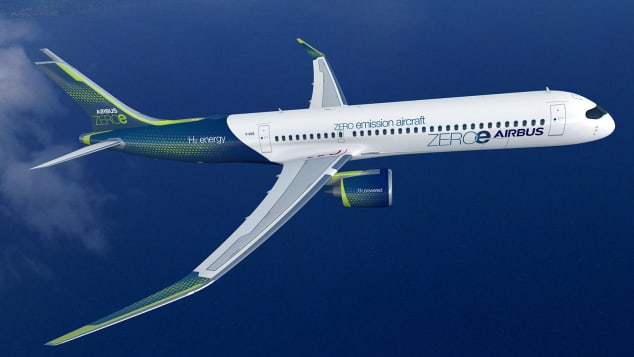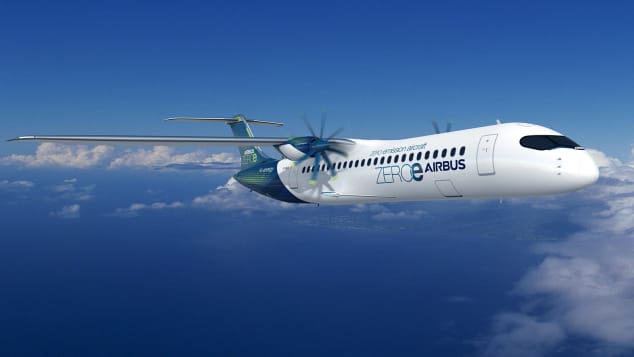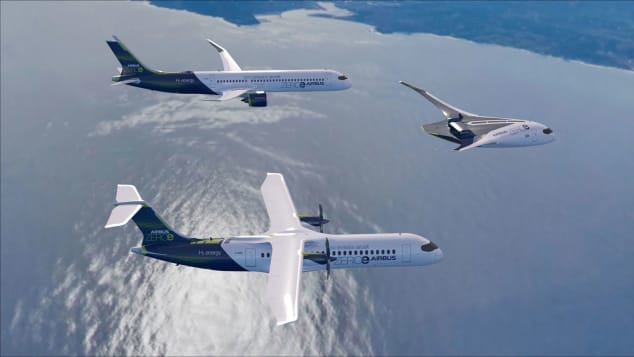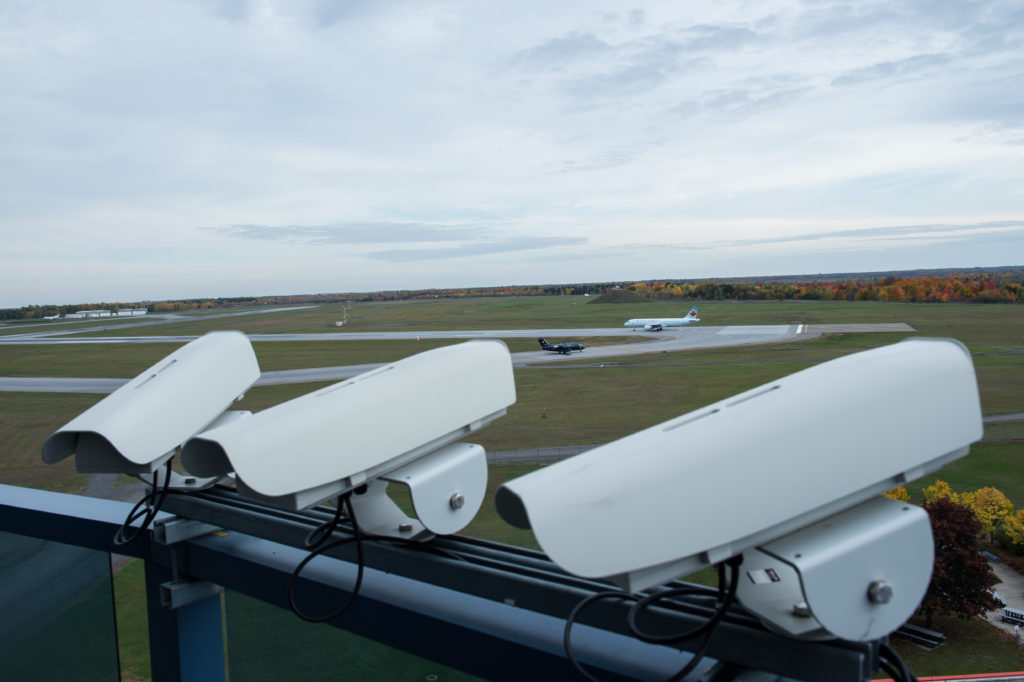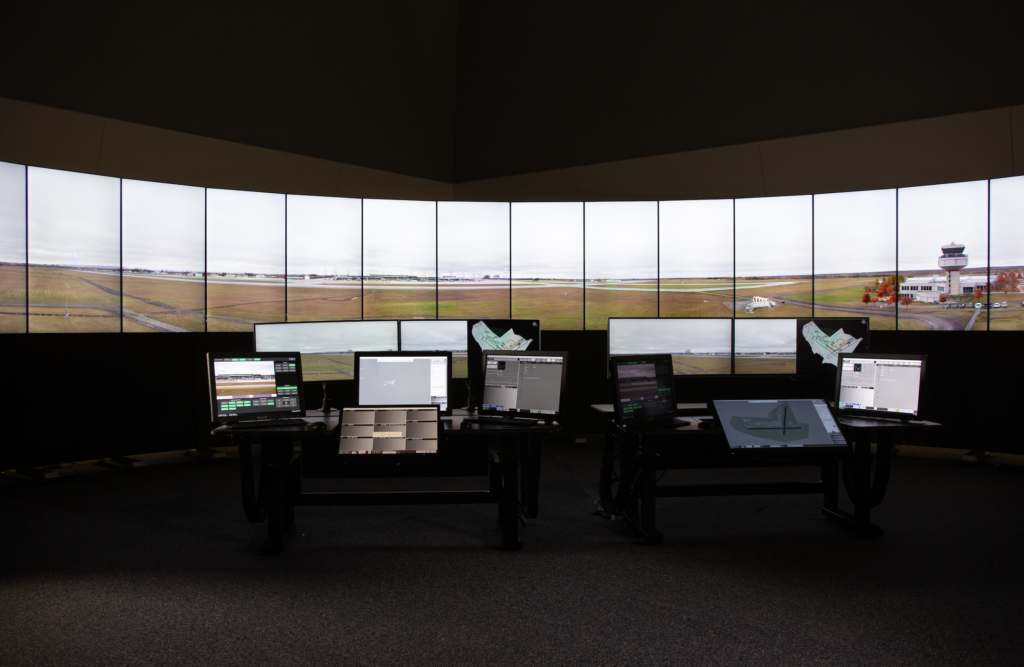(CNN) —It looks like a spaceship, runs on fuel that up until a few years ago experts were calling “crazy,” and has barely left the drawing board, but in the eyes of one of the world’s leading aircraft manufacturers, it’s undoubtedly the future.
Not even the distant future. Airbus hopes we’ll be soaring into the skies on one of its radical new designs in just 15 years, leaving the days of jet engine pollution and flight-shaming far behind us.
The blended wing aircraft is one of a trinity of eco-friendly hydrogen-fueled models unveiled recently by Airbus as part of its ambitions to spearhead the decarbonization of the aviation industry.
It’s a bold plan, and one that just a few short months ago might have seemed fanciful as demand for fossil fuel-powered air travel continued to rise, apparently immune to growing environmental concerns.
But the arrival of Covid-19 and its impact on aviation could’ve inadvertently cleared a flight path of opportunity for efforts to rethink the technology of getting the world up into the air.
Airbus has baptized its new program ZEROe. The designs revealed aren’t prototypes but a starting point to explore the tech needed in order to start building the first climate-neutral commercial planes.
“How can you possibly emerge from the pandemic, with climate neutrality as a core long-term competitiveness factor?” Airbus’s chief technology officer, Grazia Vittadini, asked rhetorically, during a briefing about the new plans.
“It would be impossible not to. Even well before the crisis, it has become an acknowledged and shared view that protecting climate and protecting our environment are key indispensable factors upon which we have to build the future of flight,” she said.
Why hydrogen?
Airbus’s plan to bring to market a zero-emission passenger aircraft by 2035 means it needs to start plotting a course in terms of technology in 2025. In fact it needs to plot several courses.
That’s because no single technology can address the energy requirements to fuel the entire spectrum of aircraft types — from flying taxis through to short-, medium- and long-range airplanes.
The specs of the three new concept planes.
Airbus
While having been recently more focused on electric aviation for small airplanes, Airbus has now pivoted towards hydrogen as a candidate for solving aviation’s CO2 problems.
“Our experience with batteries shows us that battery technology is not moving at the pace we want,” says Glenn Llewellyn, vice president of zero emission aircraft at Airbus. “This is where hydrogen comes in, it’s got several thousand times more energy per kilogram than what batteries could have today.”
Llewellyn says Airbus has already started talking hydrogen with airlines, energy companies and with airports, because “this kind of change really requires a teaming across industry and inside the aviation industry in order to make it happen.”
Hydrogen has long been seen as a viable fuel by academics, but until now it’s had little practical support.
Perhaps now, with batteries not quite cutting it, hydrogen’s time has come.
“Eighteen months ago, when people talked about hydrogen in the aerospace industry, people thought you were slightly crazy,” Iain Gray, director of aerospace at Cranfield University, tells CNN Travel.
“But now hydrogen has become something that everybody is seeing as a very significant solution to the zero carbon problems,” says Gray. Cranfield has been supporting ZeroAvia — a startup that received a £2.7m ($3.3 million) grant from the UK government to develop zero emission aviation technologies, achieving the world’s first hydrogen fuel cell-powered flight of a commercial-grade aircraft at Cranfield Airport in September.
All for one and one for all
Airbus has released this rendering of the turbofan concept.
Airbus
The three ZEROe concepts program include a 120-200 passenger turbofan with a range of 2,000+ nautical miles, capable of operating transcontinentally and powered by a modified gas-turbine engine running on hydrogen. The liquid hydrogen will be stored and distributed via tanks located behind the rear pressure bulkhead.
Then there’s a 100-passenger airplane which uses a turboprop engine powered by hydrogen combustion in modified gas-turbine engines. It would be capable of traveling more than 1,000 nautical miles, making it a suitable option for short-haul trips.
However, the real conversation piece in the trio — pictured at the top of of this article — has a “blended-wing body,” where the wings merge with the fuselage of the aircraft to produce a highly streamlined shape, like a “flying wing”. This option shares its aeronautical DNA with Airbus’s MAVERIC demonstrator aircraft ,which underwent flight tests last year to explore the energy-saving advantages of this futuristic type of airplane layout.
Looking like something out of Star Trek, Airbus’s blended-wing hydrogen airplane could carry up to 200 passengers. Its unique configuration would facilitate a radical new type of cabin interior layout for passengers, while providing ample space for hydrogen storage.
The European aircraft maker has released a new curved design that promises to cut fuel consumption up to 20%.
How a hydrogen aircraft works
Hydrogen can be used in different ways to power airplanes: It can be combusted directly through modified gas turbines; it can be converted into electric energy, using fuel cells; and hydrogen combined with CO2 can be used to produce synthetic kerosene.
“For us, it’s particularly important to combine the first two of these three elements — having direct combustion of hydrogen through modified gas turbines, with an embedded electric motor, powered by fuel cells,” says Airbus’s Vittadini.
“To accelerate on this path, we already have in the pipeline a zero-emission demonstrator, which will be fundamental, especially to de-risk concepts such as refueling of such an aircraft and safe storage and distribution of hydrogen on board an aircraft,” she adds.
Could existing jet engines run on hydrogen?
Since it’s already been successfully proven that sustainable aviation fuel can be substituted into existing jet engines, the question now is whether hydrogen could also be a “drop in” fuel.
This is something that Rolls-Royce (which is not associated with the ZEROe program) has been looking at, having successfully tested its Trent engines with a hydrogen/kerosene blend in the past.
“Moving to 100% hydrogen would require adaptation to current gas turbine design,” Alan Newby, director of aerospace technology and future programs at Rolls-Royce Civil Aerospace, tells CNN Travel.
But Newby also explains that the biggest challenge would be managing the flame temperature and stability in the combustion system. Then there is the question of adapting the fuel delivery and management system, notably for liquid hydrogen. Another caveat, he notes, is that one kilo of hydrogen has three times the energy of kerosene, but more importantly, it takes up five times the volume.
“So the answer is — yes, it is possible but there would need to be a big focus on redesigning these elements of the current engine design as well as looking at the gas turbine as a complete tank-to-exhaust system and taking a more holistic, overall system level approach,” says Newby.
This is the ZEROe turboprop concept plane.
Airbus
How these concepts could change commercial aviation
The unveiling of the Airbus concepts symbolizes a milestone in terms of civil aerospace adopting hydrogen at the top tier of industry.
True, ongoing efforts with smaller aircraft and drones using hydrogen and hydrogen fuel cells are plentiful. However, Airbus’s announcement signifies a major strategic shift for commercial aviation, whereby hydrogen could become the norm for short- and medium-haul flights for the 2030s and beyond.
“But there’s no point in addressing a hydrogen airplane if you’re not going to look at the system in which it operates,” cautions Gray.
Aviation “needs to address the whole zero carbon issue in a holistic systems way, looking at airports, air traffic control, aircraft, and transport to and from airports,” he explains.
Fortunately, the dialogue between stakeholders appears to be underway.
“This is going to create a massive change in the energy and aviation ecosystem,” says Airbus’s Glenn Llewellyn. “We’ve already started working with airlines, energy companies, and with airports because this kind of change really requires a teaming across industry and inside the aviation industry in order to make it happen.”
This necessity for a holistic approach dovetails neatly with the aspiration among airport operators to reduce their own carbon footprint — hydrogen could power many aspects of airport infrastructure.
For example, in 2015, Memphis International Airport carried out a two-year demonstration of the world’s first zero-emissions, hydrogen fuel cell-powered ground support equipment, saving over 175,000 gallons of diesel fuel and 1,700 metric tons of CO2.
In a separate initiative at Toulouse-Blagnac Airport, a hydrogen production and distribution station is being installed for fueling hydrogen-powered buses.
What makes hydrogen a compelling fuel for airports is the fact that it can be produced on-site as well as from the airport’s waste materials.
Finnish airport company Finavia is among those evaluating its practicality.
“We’re looking at how we could use the waste streams at Finavia’s airports, including the waste from glycol (the fluid used for de-icing airplanes) to generate hydrogen,” says Henri Hansson, senior vice president of infrastructures and sustainability.
This rendering shows the three craft flying in formation.
Airbus
A significant leap towards eco-friendly air travel
Having a common fuel that airlines and airports alike can use is a total gamechanger for the industry.
The introduction of hydrogen airplanes and the extent of its environmental benefit will depend on the degree of uptake over coming years. Airbus’s Vittadini says that “our estimation is that it will contribute by more than 50% along our journey to decarbonizing aviation.”
There are, however, still many technological hurdles ahead in commercializing any type of sizable hydrogen airplane.
This is partly due to weight and size constraints, says Newby, but “also because the industry’s reliability and safety requirements are set very high, which requires very high engineering maturity barriers to be achieved, particularly for passenger-carrying services.”
And hydrogen-powered aviation is no silver bullet, he says. It will take a combination of different solutions, including sustainable aviation fuels, electric, hybrid and more efficient gas turbines, powering different missions, to help the industry reach its emissions goals.
“Timing-wise,” says Newby, “small hydrogen-powered regional aircraft could potentially be available before the end of the decade.”
What this means for fliers
Until Airbus settles on a configuration, it’s too early to know what form the passenger cabin will take or what the on-board experience will look like.
But what can be reliably predicted is what it will feel like from a human sensibilities standpoint. Hydrogen could be the antidote to flight-shaming, if Airbus can get ZEROe off the ground.
Launching these concepts in the midst of a pandemic might even be a stroke of genius on Airbus’s part, now that people have had time, while being cooped up, to reflect on the privilege of affordable aviation while acknowledging its impact on the planet.
“Covid, ironically, has reminded many people of what the world looks like when they’re not seeing contrails and not hearing large jet engines,” says Gray. “Flying, per se, is not the problem; carbon is the problem which we’re trying to address.”
“Flying has given individuals around the world great personal and professional travel opportunities, therefore the emphasis has got to be on solving the emissions and the carbon problems. Hydrogen is a gamechanger, and the industry is up for it.”
Paul Sillers is an aviation journalist specializing in passenger experience and future air travel tech. Follow him at @paulsillers





